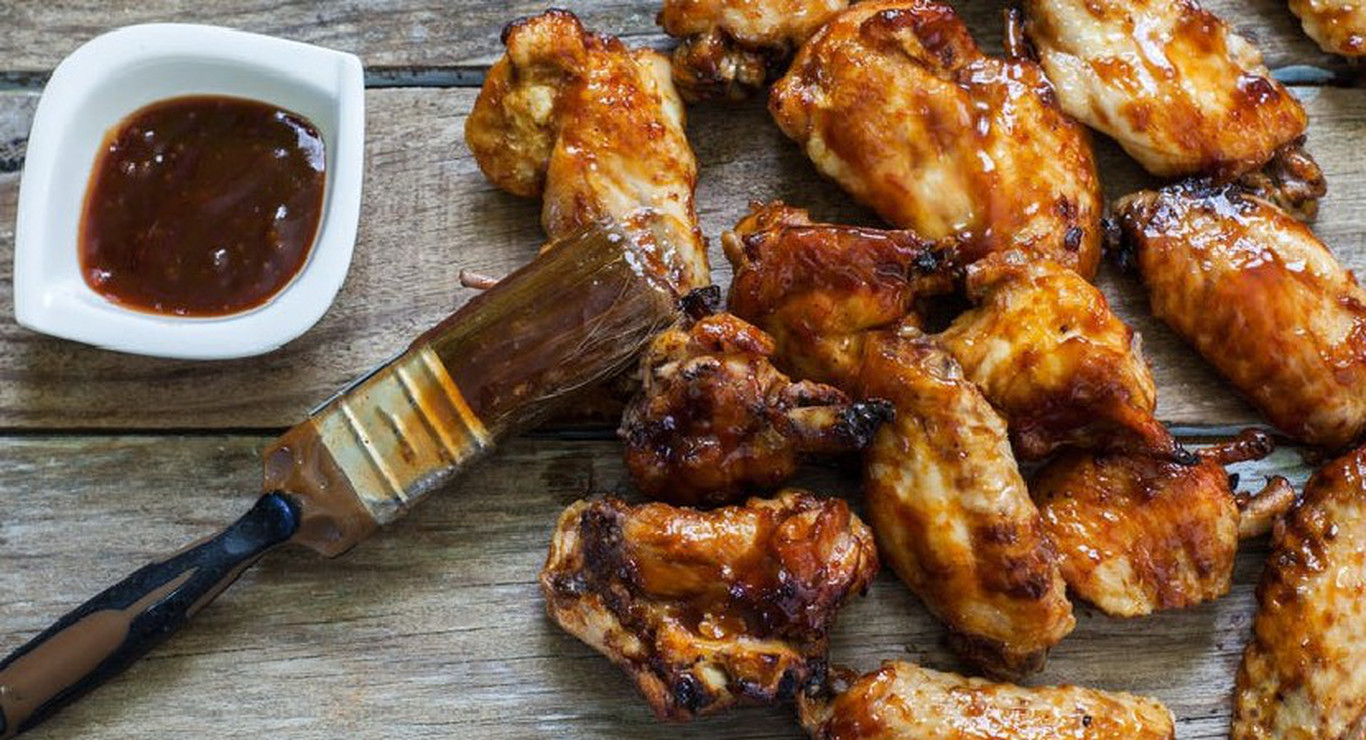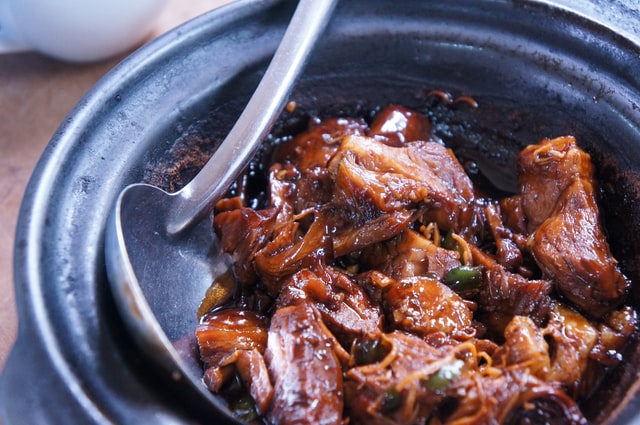Saucing a piece of meat, only to have it run off and pool on the plate, is heartbreaking. A good sauce is a vehicle for contrasting and complementary flavors, but it doesn’t do you any good if it can’t stick to the food it’s supposed to be saucing.
An effective sauce is one that actually stays on the food, adding flavor and mouth-coating texture. Making such a sauce requires a little manipulation, but everything you need is most likely already in your cupboard.
What is a sauce?
Sauces are dispersions, with flavorful ingredients suspended throughout a carrier ingredient. The carrier is called the “continuous phase,” and it is almost always water. The other ingredients are part of the dispersed phase, and they are – as you probably guessed – dispersed throughout the continuous phase.
Water is obviously an important ingredient in sauces, but no one wants a watery sauce. The goal when making a sauce is to make the water less watery, and the best way to do that is obstruct its movements. As Harold McGee explains in his book On Food and Cooking: The Science and Lore of the Kitchen, water is a tiny molecule, which makes it very mobile:
Individual water molecules are small – just three atoms, H₂O. Left to themselves, they’re very mobile: so water is runny and flows easily as a stream. (Oil molecules, by contrast, have three chains stuck together, each 14 to 20 atoms long, so they drag against each other and move more slowly. This is why oil is more viscous than water.) But intersperse solid particles or long, tangly molecules, or oil droplets, or air bubbles among the water molecules, and the water molecules can move only a small distance before the collide with one these foreign, less mobile substances. They’re then able to make sonly slow progress, so they flow more reluctantly.
Simply put: To get your sauce to stick to your food, you have to slow it down.
Slow down your sauce with fat
Buffalo sauce is an iconic, two-ingredient sauce that clings to chicken wings without any trouble. It’s most commonly made with hot sauce (which is quite watery) and butter. Not only is butter a fat (a long, tangly molecule), it’s a fat that’s solid at room temperature. As the chicken and sauce cool, the sauce will slow even more, clinging to the chicken and coating its skin. Butter (or cream, which has a high fat content) is also what makes pan sauces so luscious, letting them stick to your steak or chop. Next time you encounter a runny pan sauce, add a pat of butter, a splash of heavy cream, or a dollop of sour cream to slow down its flow rate and give it some body.
Lean on cornstarch
Starch is another effective thickener that slows down water by way of swelling and gelation. When exposed to hot water, starch granules weaken and start to absorb liquid. The granules swell, weakening even more regions of the granule and disrupting the starch molecules’ organized structures. According to McGee, this creates “amorphous networks of starch and water intermingled,” which slows down your sauce, helping it coat your food.
If you’re dealing with a stir-fry sauce or gravy that’s just a little too runny, make a cornstarch slurry with two parts water and one part starch (adding it directly to your sauce will cause it to clump), then whisk it into your hot sauce, keeping in mind your sauce will further thicken as it cools. (If you want to see how much it will thicken without letting your whole pot of sauce cool down, drizzle a little bit on a cool plate.)
If you don’t have any cornstarch, you can also use flour and make a beurre manie, which is fancy French for “flour butter paste” or “raw roux.” To make this little ball of thickening magic, just take equal masses of flour and butter, and mash it all up into a little paste nugget. To thicken a sauce (or soup or anything) break off a little piece and just drop it into some hot liquid. Stir, stir, stir, and watch the magic happen.
Puree some vegetables
One of the easiest ways to slow down water is to physically block it with vegetable matter. You can blend super roasted vegetables directly into a gravy, or whirr them with the pot liquor from your favorite Instant Pot recipe. Vegetables that are naturally high in starch (such as potatoes) or pectin (such as leeks) thicken on a chemical level, as well. Adding a couple of spoonfuls of instant mashed potatoes can help make a sauce more clingy, and pureed leeks can add major body.
Boil it a bit
Another way to reduce the runniness of your sauce is to physically remove the water by boiling it away. This is known as “reducing,” in the culinary world, because you are reducing the sauce’s volume by boiling some of the water off, leaving behind the fat and other tasty ingredients (with higher boiling points). If your sauce looks runny before it even hits your food, boil it for a bit to thicken it up.
Add a little sugar
Sugar doesn’t thicken in quite the same way as starch or fat, but it does make your sauce stickier, and getting your sauce to stick to the food is the entire point. Adding sugar to water creates a solution that is thicker than water, and further heating (boiling or simmering) makes it even thicker.
Photo by yvonne lee harijanto on Unsplash
Apply it at the right time
You may have noticed that many recipes for sauce-coated meats have you apply your sauce later in the cooking process, after your meat has spent some time on the grill or in the oven. Again, it all comes down to water.
Cooking a piece of meat causes it to release a good bit of moisture. If you apply your sauce at the beginning it will steam right off your food, so brush on your lusciously thick and reduced glazes and sauces at the end, once the outer portion of your food looks fairly dry and/or crisp to prevent the dreaded sauce slide-off.
This article was written by Claire Lower from Lifehacker and was legally licensed through the Industry Dive Content Marketplace. Please direct all licensing questions to legal@industrydive.com.







